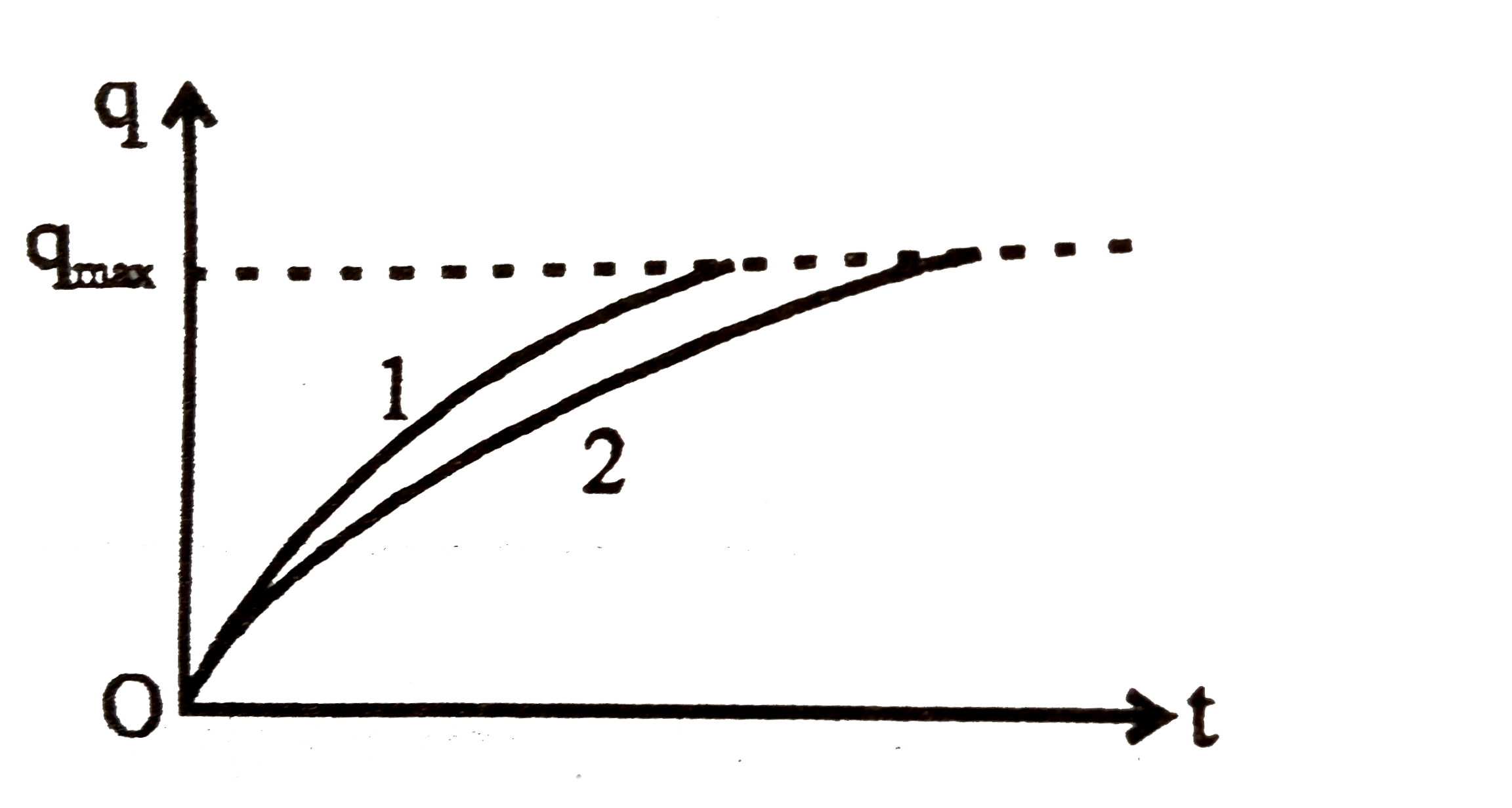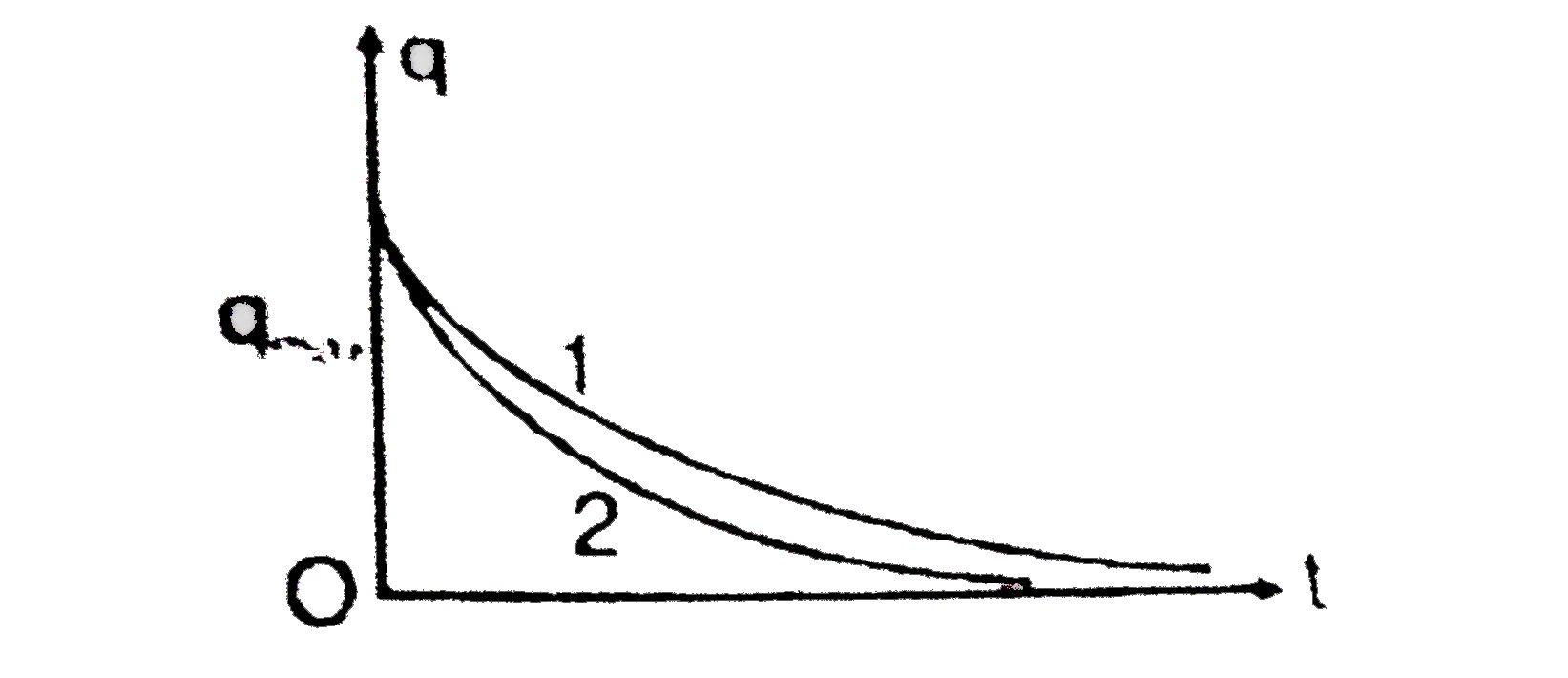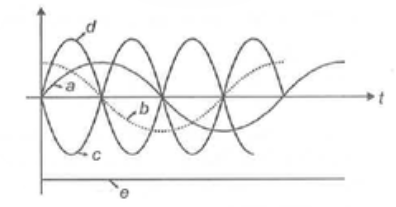Statement-1 : Instantaneous power across capacitor under AC source in a RC circuits will be having positive and negative values alternately.
Statement-2 : emf of the alternating source varies sinusoidally.
Statement-1 is True, Statement-2 is True, Statement-2 is a correct explantion for Statement-1
Statement-1 is True, Statement-2 is True, Statement-2 is NOT a correct explantion for Statement-1
Statement-1 is True, Statement-2 is False
Statement-1 is False, Statement-2 is True.
To analyze the given statements, let's break down the concepts involved in the context of an RC circuit powered by an alternating current (AC) source.
1. Understanding the AC Source:
- An alternating current (AC) source provides a voltage that varies sinusoidally over time. This means that the voltage can be expressed as:
V(t)=Vmsin(ωt)
- Here, Vm is the maximum voltage, ω is the angular frequency, and t is time.
Hint: Recall that AC voltage changes direction periodically, which is a key characteristic of sinusoidal functions.
2. Voltage Across the Capacitor:
- In an RC circuit, the voltage across the capacitor also varies sinusoidally, similar to the source voltage. The relationship between the voltage and current in a capacitor is given by:
IC=CdVCdt
- If VC=Vmsin(ωt), then the current through the capacitor is:
IC=CVmωcos(ωt)
- This can also be expressed as:
IC=CVmωsin(ωt+π2)
- This indicates that the current leads the voltage by 90∘ (or π2 radians).
Hint: Remember that the current in a capacitor leads the voltage by 90∘ due to the nature of capacitive reactance.
3. Calculating Instantaneous Power:
- The instantaneous power P in the circuit can be calculated as:
P(t)=V(t)⋅I(t)
- Substituting the expressions for voltage and current:
P(t)=Vmsin(ωt)⋅CVmωcos(ωt)
- Using the trigonometric identity sin(a)cos(a)=12sin(2a), we can simplify this to:
P(t)=12CV2mωsin(2ωt)
- This shows that the power oscillates between positive and negative values, confirming that it alternates.
Hint: The product of sine and cosine functions results in a sine function with double the frequency, indicating oscillation.
4. Evaluating the Statements:
- Statement 1: "Instantaneous power across capacitor under AC source in RC circuits will be having positive and negative values alternately."
- This statement is true as we derived that the power oscillates.
- Statement 2: "EMF of the alternating source varies sinusoidally."
- This statement is also true since the voltage from an AC source is sinusoidal.
5. Conclusion on the Explanation:
- While both statements are true, the explanation provided for Statement 1 regarding the reason for the alternating power is not entirely correct. The power alternates due to the current leading the voltage by 90∘, not merely because the EMF is sinusoidal.
Final Conclusion: Both statements are true, but the explanation for Statement 1 is not correct.
Final Answer:
- Statement 1 is true.
- Statement 2 is true.
- However, Statement 2 is not a correct explanation for Statement 1.
- An alternating current (AC) source provides a voltage that varies sinusoidally over time. This means that the voltage can be expressed as:
V(t)=Vmsin(ωt)
- Here, Vm is the maximum voltage, ω is the angular frequency, and t is time.
- In an RC circuit, the voltage across the capacitor also varies sinusoidally, similar to the source voltage. The relationship between the voltage and current in a capacitor is given by:
IC=CdVCdt
- If VC=Vmsin(ωt), then the current through the capacitor is:
IC=CVmωcos(ωt)
- This can also be expressed as:
IC=CVmωsin(ωt+π2)
- This indicates that the current leads the voltage by 90∘ (or π2 radians).
- The instantaneous power P in the circuit can be calculated as:
P(t)=V(t)⋅I(t)
- Substituting the expressions for voltage and current:
P(t)=Vmsin(ωt)⋅CVmωcos(ωt)
- Using the trigonometric identity sin(a)cos(a)=12sin(2a), we can simplify this to:
P(t)=12CV2mωsin(2ωt)
- This shows that the power oscillates between positive and negative values, confirming that it alternates.
- Statement 1: "Instantaneous power across capacitor under AC source in RC circuits will be having positive and negative values alternately."
- This statement is true as we derived that the power oscillates.
- Statement 2: "EMF of the alternating source varies sinusoidally."
- This statement is also true since the voltage from an AC source is sinusoidal.
- While both statements are true, the explanation provided for Statement 1 regarding the reason for the alternating power is not entirely correct. The power alternates due to the current leading the voltage by 90∘, not merely because the EMF is sinusoidal.
- Statement 1 is true.
- Statement 2 is true.
- However, Statement 2 is not a correct explanation for Statement 1.
Similar Questions
Can the instantaneous power output of an ac source ever be negative ? Can the average power output be negative ?
View SolutionThe charge across the capacitor in two different RC circuit 1 and 2 are potted as shown in figure.

Choose the correct statement (s) related to the two circuit.
View SolutionThe instantaneous charge on capacitor in two discharging RC circuils is plotted with respect to time in figure. Choose the correct statement (s) (where E1 and E2 are emfs of two DC sources in two different charging circuits and capacitors are fully charged ).

View SolutionIf an ac source is connected across ideal capacitor and current passing through it is denoted by curve (a) then instantaneous power is denoted by curve

View SolutionA capacitor and a bulb are connected in series with a source of alternating emf. If a dielectric slab is inserted between the plates of the capacitor, then
View SolutionWhat is the value of power factor for a pure resistor connected to an alternating current source?
View SolutionAn ac source is connected to a resistive circuits. Which of the following statements are false ?
View SolutionIn a series LCR circuit which is connected to an AC vottage source, choose the incorrect statement
View SolutionIf the frequency of the source e.m.f. in an AC circuit in n,the power varies with a frequency:
View SolutionA capacitor of capacitance 10μF is connected to an AC source and an AC Ammeter. If the source voltage varies as V=50√2sin100t, the reading of the ammeter is
View Solution
